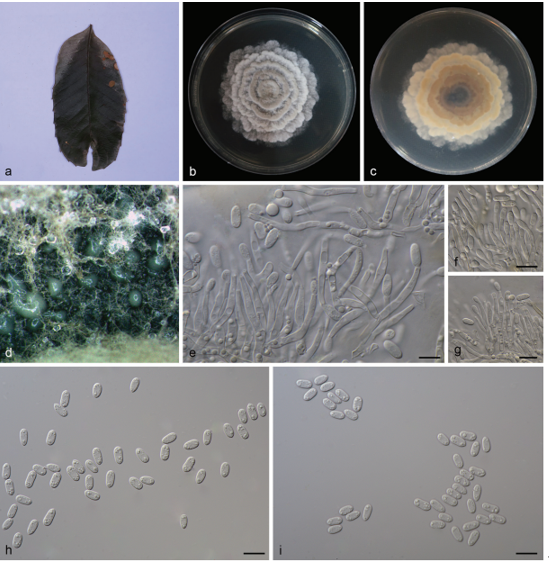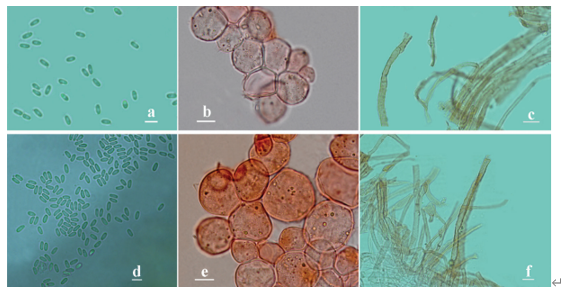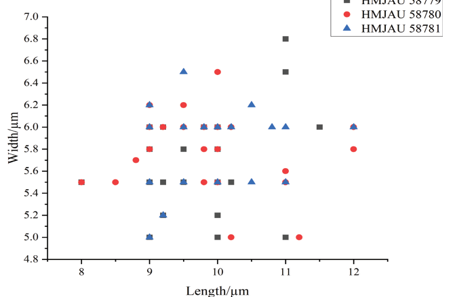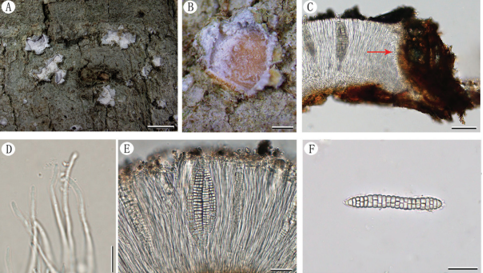Conioscypha verrucosa J. Yang & K.D. Hyde 2020
Index Fungorum number: IF556630; Facesoffungi number: FoF 06275
Holotype: CHINA, Guizhou Province, Dushan District, 25° 57.9′ N, 107° 39′ E, on decaying wood , submerged in a freshwater stream, 26 August 2017, J. Yang, SG 2-1 (MFLU 18-1503, holotype; KUN-HKAS 102158, isotype), ex-type living culture MFLUCC 18-0419.
Morphological description
Sexual morph Undetermined. Asexual morph Colonies on natural substrate sporodochial, scattered, dark brown or black. Mycelium partly immersed, partly superficial, composed of septate, hyaline hyphae. Conidiophores up to 40 μm long, macronematous, mononematous, compact, flexuous, simple or branched, mostly moniliform, with globose to subglobose, ellipsoidal or clavate cells, hyaline, smooth-walled, sometimes reduced to conidiogenous cells. Conidiogenous cells 5.5–13 × 5–11.5 μm ( x̄ = 9 × 7.6 μm, n = 30) monoblastic, integrated, terminal, globose to ellipsoidal, hyaline, smoothwalled. Conidia 12.5–23 × 10.5–20 μm ( x̄ = 16.5 × 14.5 μm, n = 50), acrogenous, globose, subglobose, ellipsoidal or obovoid, aseptate, verrucose, guttulate, dark olivaceous to dark brown, with a central basal pore.Culture characteristics: Conidia germinating on WA within 24 h and germ tubes produced from both ends. Colonies on PDA reaching 5–10 mm diam. at two weeks at 25 °C, in natural light, circular, wrinkled, with sparse dark brown mycelium in the middle, sparse pale brown mycelium on the outer ring with irregular margin; in reverse with a brown inner ring and a pale brown outer ring.
Habitat: twigs from freshwater habitats.
Distribution:China.
GenBank Accession: ITS:MN061350;LSU:MN061364;RPB2:MN061668;SSU:MN061352.
Notes: In the phylogenetic analysis Conioscypha verrucosa clustered within Conioscypha as a sister taxon to C. pleiomorpha with strong support (100% ML, 91% MP, 1.00 BYPP; Fig. 135), based on a combined LSU, ITS, SSU and RPB2 sequence dataset comprising 60 taxa. Morphologically, Conioscypha verrucosa and C. pleiomorpha share similar conidial morphology having unicellular, globose, subglobose, ellipsoidal or obovoid conidia of similar size. But the conidia of C. verrucosa are olivaceous green to dark brown while those in C. pleiomorpha are mid brown. Conioscypha pleiomorpha has micronematous conidiophores, often reduced to conidogenous cells; conspicuous cupulate conidiogenous cells forming multi-layer, cupulate collarette after several percurrent proliferations and enteroblastic conidia. However, the unique generic feature of conidiogenesis was not observed in Conioscypha verrucosa. Conioscypha verrucosa produces macronematous, mononematous, septate or moliniform conidiophores, globose to ellipsoidal conidiogenous cells and holoblastic conidia.
Reference: Kevin D. Hyde1,5,8,22 · Yang Dong2,3 · Rungtiwa Phookamsak1,5,6,7 et al.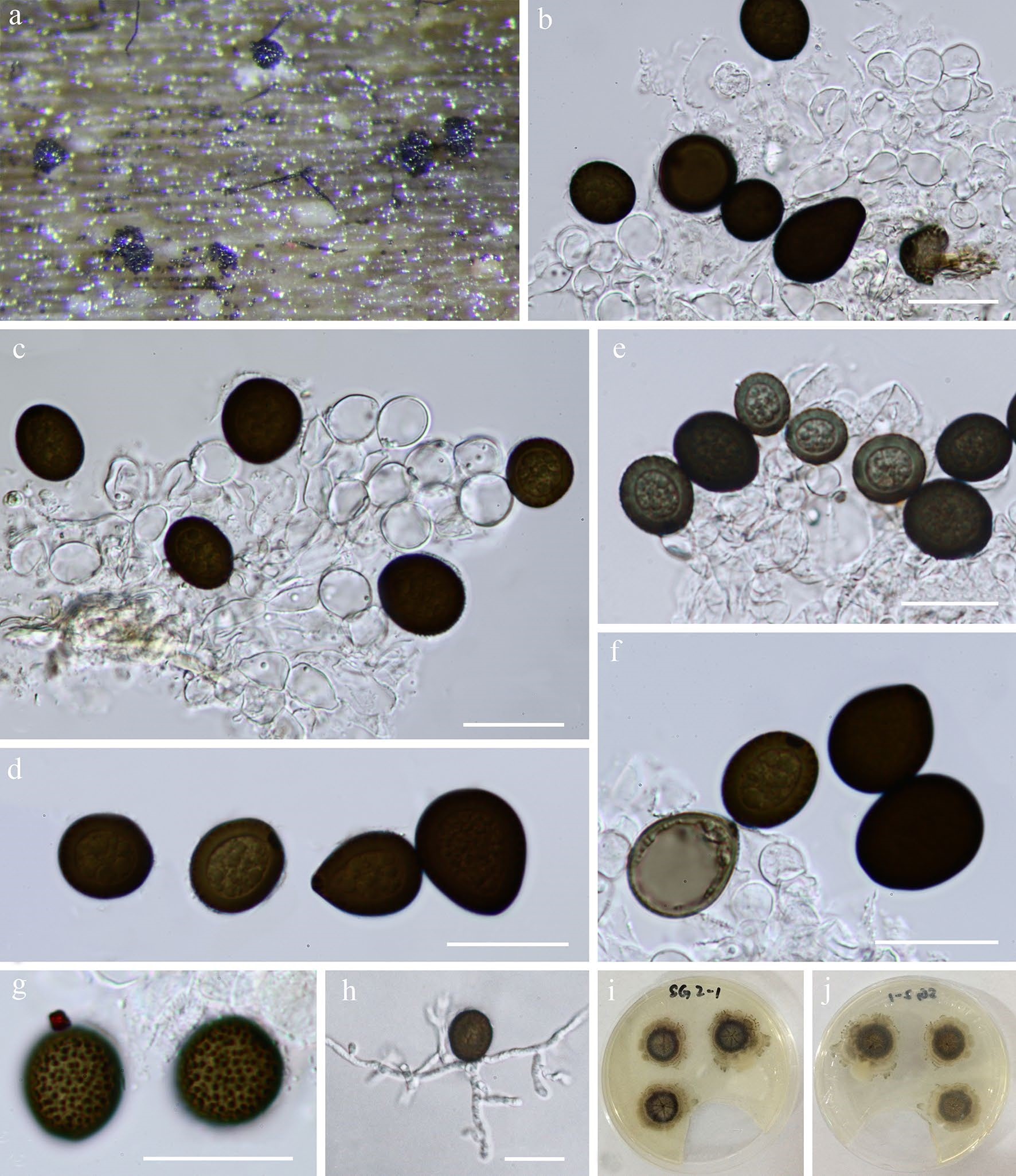
Conioscypha verrucosa (MFLU 18-1503, holotype). a Colonies on woody substrate. b, c, e Conidiogenous cells and conidia. d, f, g Conidia. h Germinated conidium. i, j Culture on WEA (i = from above, j = from below). Scale bars: b–h = 20 μm


